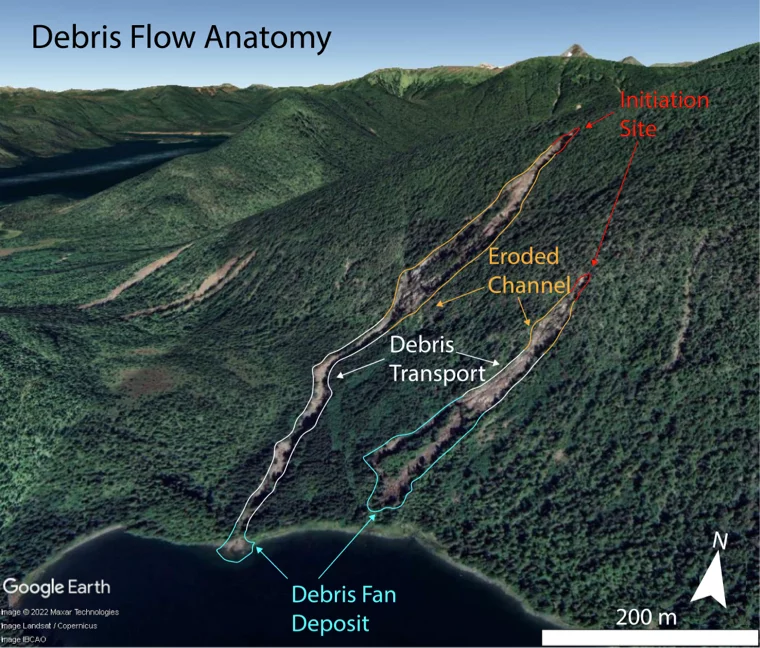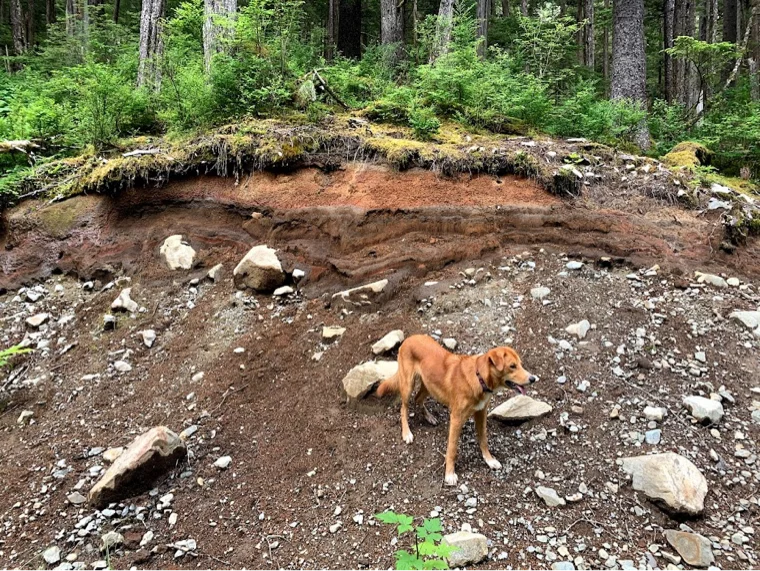Landslide Vocabulary
“Landslide” describes the mass movement of material under the force of gravity. There are many types of landslides including slumps, avalanches, rockfalls, and debris flows (to name a few). Read more about different types of landslides.

This project specifically focuses on debris flows, which are a type of landslide initiated by heavy rainfall. They occur as slurries of sediment and water that flow rapidly downslope. We focus on debris flows because they are known to occur in Sitka and have the potential to cause catastrophic damage and loss of life.
Characteristics of a Debris Flow
Debris flows are a type of landslide that are triggered by intense rainfall and ‘flow’ downhill following existing drainage channels. The material in a debris flow is sometimes compared to that of wet cement, as it is made up of mud, water, and other debris. These flows often travel at speeds greater than 25 mph making it difficult to take evasive action once initiated. Learn more about debris flows.
Geology of Sitka Hillsides
Layers of rock, gravel, and volcanic air fall deposits form Sitka’s hillslopes, like a layer cake. The bedrock, which is about 180 to 140 million years old, was carved and overlain by glacial till at the end of the last ice age about 12,000 years ago. Glacial till is material left behind by retreating ice and often looks like gray, unsorted gravels.
When Mt. Edgecumbe (L’úx) erupted about 10,000 years ago, tephra material settled atop the till on nearby mountains and created a layer of highly porous and permeable material that blankets the landscape. Tephra is ash material that is often orange or red in color, as seen in the photo below.
These geologic layers, topped by organic material, are important in the context of understanding why landslides occur in Sitka. The boundaries between these layers create zones in the subsurface that can become overly saturated during intense storms due to pooling of water over less porous material (i.e. ash over bedrock). This oversaturated state causes material to lose strength and fail under the force of gravity, thus initiating a debris flow.
Learn more about local geology.



